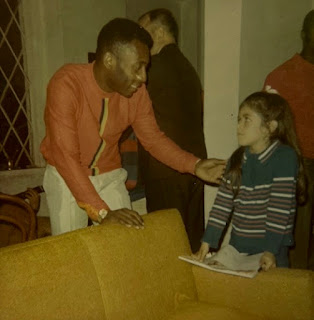In NY
The temptation to eat hamburgers in my hotel room, typing on this computer all the time, had to be resisted. And it was. I went for a long walk and then checked what's new in American Contemporary Art. My lucky day: the Whitney Museum houses one of the world's foremost collections of twentieth-century American art, and the Biennial was on.
Unmissable, if one is around. Not only for the single pieces (I enjoyed many of them, especially Walead Beshty, Jedediah Caesar, Charles Long) but also for the overview it affords on today's America art. Not many novelties, perhaps even a lack of clear ideas and purpose, but a tangible sense of search for new ways of expressions.
Probably most of the objects will soon (one hope) be forgotten. And the usual, obsessive, self-referential mumbling of people who have nothing to say, but think that saying this much, in some smart-assish way, can fill the gap, makes one puke. Who cares! Shut-up, please. Don't waste broadband. White noise and zeros acquire meaning only when there is a message or ones to which they can be contrasted. But then, it is the curators' fault if sometimes silence is not respected (Frances Stark).
One simple thing that seems to have been lost is a clear grasp of the inevitably informational nature of art. Art is a form of communication, where there is
- a sender,
- a message,
- a code,
- an encoding process,
- a medium,
- a communication,
- a receiver, and
- a final decoding by a receiver.
So it is bad, tricky, perhaps disingenuous or simply silly and meaningless to try to avoid the informational nature of art. All rules can be broken but the rule that there will be rules, such as the rule of breaking all rules. Trivial and inevitable truism. One may wish to disrespect, bypass, destroy, annihilate, overcome, disregard, chew and spit out the informational model... but all in vain, for no art is possible without such a structure, let alone an art that denies it.
The best expressions of contemporary art seems to me those that take new and further advantage of the informational model, with innovative techniques, contents, a diversificatoin of senders and receivers, of codes and encoding/decoding processes. Seen in this way, visual-artistic expressions are boundless as music and literature are. The only trouble is that you need to have something interesting to say. And this is not common.
Walking back. A ruminating reflection on silence. On how we miss it so much. Because we cannot listen to ourselves and hence we become strangers to ourselves. The park was blasted by salsa music to force people to jump and exercise at the rhythm of a different kind of sunshine. It ruined the atmosphere.





New York, some free time, and art. What a combination! I have to tell you: I am (just a bit) envious.
ReplyDeleteEveryone needs some alone-time, and spending this time reflecting on art is a great time to learn about oneself. At least, I feel that way.
Looking at art as a form of communication is a bit tricky, isn't it? I am not sure if each sender consciously knows what the message is. Also the encoding may be triggered from deep within the artist's subconsciousness. Decoding the message, thus, is a bit like a game where you not even know if and when you have won.
When I started out looking into art I was intimidated by the art experts who exactly knew and decoded what the artist meant or intended. It took me years, literally, to shrug that off and to learn to enjoy the vagueness of the message, the game of decoding the messages myself, i.e., to learn to listen what a work of art is telling me.
Interestingly, a lot of the comments on the audio guide were chosen from texts that had been sent by viewers through their mobiles. An way of catching some of the truth in your comment.
ReplyDelete